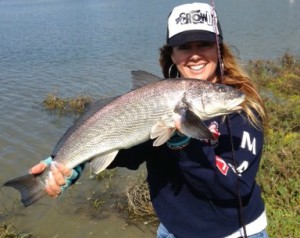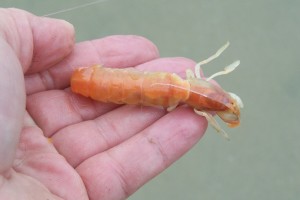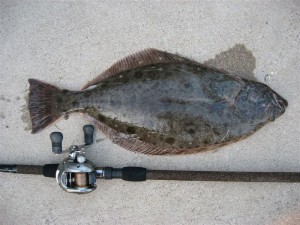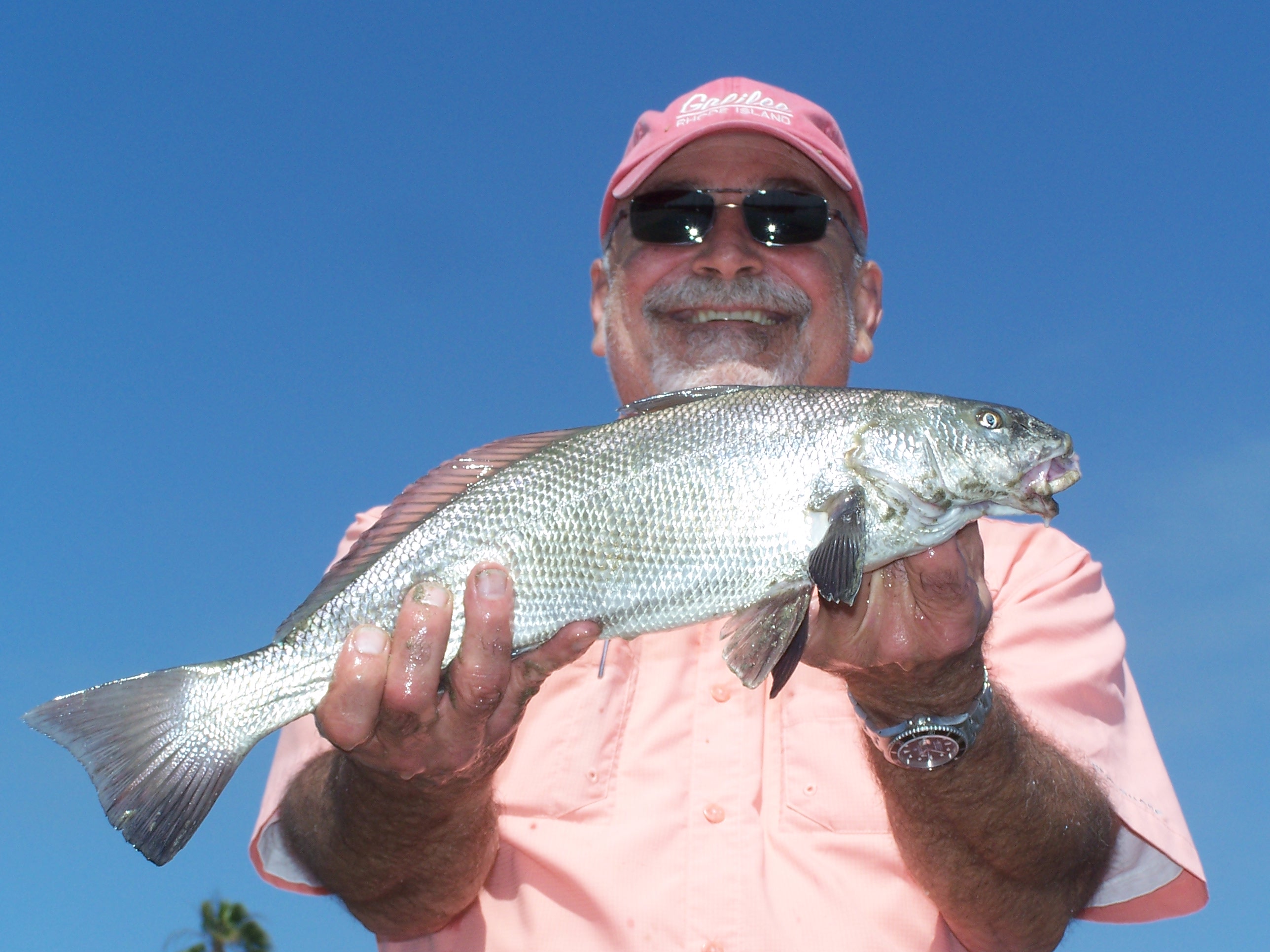Shore Fishing in the Bay
By Bill Varney Jr.
Wind and waves pound the coast and make surf fishing difficult in winter. It’s no fun for the fish either. Both food and a safe home along the open beach are scarce in winter so most surf fish move inside bays, harbors and estuaries during these cold-water months.
The warm calm water of the bay offers a great place to hide and feed while fish wait for spring. Warmer water allows them to spawn and find various food sources in the bay. Most inner water ways are chocked full of ghost shrimp, worms, clams and crabs which keep most fish inside the bay until spring when sand crabs and other forage become available along the beach.
 During fall, surf fish transition from the beach to the bay. The first sign of cool winter water sends most of the sand crabs and other food along the beach into hibernation and signals it’s time for fish to find their way into warmer water. In the spring, as the water warms in the inner waterways, fish sense a change and make their way out into the open water and along the beach to forage on beds of sand crabs.
During fall, surf fish transition from the beach to the bay. The first sign of cool winter water sends most of the sand crabs and other food along the beach into hibernation and signals it’s time for fish to find their way into warmer water. In the spring, as the water warms in the inner waterways, fish sense a change and make their way out into the open water and along the beach to forage on beds of sand crabs.
Winter is a fantastic time to target both corbina and spotfin croaker in the bay. Some of the biggest “surf fish” I’ve ever caught have been in the bay—where they thought they were safe from me! So here are a few tricks and tips I employ to find, bait and catch croakers in the bay.
First let’s rod and reel up. I have two rod and reel combos I like to use in the bay. The first combo is for fishing bait. Find the longest trout rod (7’-9’ is best) in your garage. Look for one with a lot of bend that’s lightweight and easy to cast. Match it up with a 2500-size spinning reel loaded with 6lb monofilament. For your lure-casting rod I use an eight foot casting rod matched with a small bait casting reel loaded with 10lb monofilament. Because you will be casting over and over straight out from shore this setup works great with Lucky Craft and Rapalla XRap lures, Krocodiles and Kastmasters.
For rigging lures on your casting rod, just tie lures directly to your main line. For bait fishing you will need to employ the Carolina rig (sliding egg sinker, 6mm bead, swivel, fluorocarbon leader and hook).
Here’s where you will have a few variations from surf fishing. In the bay when bait fishing, you’ll always want to use the lightest sliding egg sinker possible. I deploy a 1/4th ounce sliding egg sinker followed by a bead, #12 black swivel and thirty inches of 6lb fluorocarbon leader material. My hook is a # 2 Owner Mosquito Ultra Light hook. This rig will give you a very stealth presentation, which is exceptionally important in a bay setting where there is very little current and remarkably clear water.
 Live bait choices vary in the bay but your best bet are lug/blood worms, clams and ghost shrimp. All three work great on the Carolina rig and should be cast from shore and slowly retrieved along the bottom. Although you can cast out and leave your bait in the “dead stick” position this method assumes the fish will find your bait. Using a cast and slow retrieve motion allows you to cover more surface area where you are in charge of finding the fish rather than them finding you.
Live bait choices vary in the bay but your best bet are lug/blood worms, clams and ghost shrimp. All three work great on the Carolina rig and should be cast from shore and slowly retrieved along the bottom. Although you can cast out and leave your bait in the “dead stick” position this method assumes the fish will find your bait. Using a cast and slow retrieve motion allows you to cover more surface area where you are in charge of finding the fish rather than them finding you.
Finding fish in the bay involves location, location, location. Fish tend to congregate near rocks and troughs in the bay. Unlike the beach, bays tend to have very few changes in bottom structure. In spring and fall, when fish are transiting into and out of the bay, fish near the opening/exit of the bay along areas where rock, piers, pilings and structure meet sand. Look for swirling, foaming off-colored water as these current areas attract fish.
Fish also congregate near beds of eelgrass. Finding these spots is a bit more difficult but pay special attention to areas where you become snagged and then unsnagged or even bring in a bit of eelgrass. Make note of those areas and fish their edges.
Walk the bay at low tide and find the areas where a trough or ridge has formed. Line that area up with something permanent and come back at high tide, line yourself up with the landmark and fish there. Fish tend to feed in these areas as they make great ambush locations when edges are brushed by current and often expose crabs, clams and ghost shrimp—a bay food favorite.
 The last piece of the puzzle is how tides effect fishing the bay. Incoming and outgoing tides help move water and work by bringing forage to fish. But some areas fish much better at a high tide or a low tide as determined by where the troughs, holes or structures are located. Visit the bays you wish to fish at both tides and look for structure to see what tide works best in creating currents where water covers all the places fish call home.
The last piece of the puzzle is how tides effect fishing the bay. Incoming and outgoing tides help move water and work by bringing forage to fish. But some areas fish much better at a high tide or a low tide as determined by where the troughs, holes or structures are located. Visit the bays you wish to fish at both tides and look for structure to see what tide works best in creating currents where water covers all the places fish call home.
When winter winds and waves move you off the beach try hitting the bay. Down-size your rig and use baits like lures, worms, clams and ghost shrimp that big fish eat. Find structure and moving water and make your cast there. Then spread your feet and hold on cause big fish would like to see you wet too!
